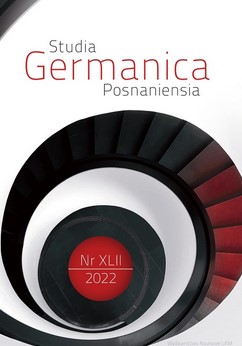GOETHES „MÄRCHEN“ UND ESSAYS ZUR „SPIRALTENDENZ“ – EINE POSTHUMANISTISCHE LEKTÜRE
GOETHE’S “MÄRCHEN” AND ESSAYS ON “SPIRAL TENDENCY” – A POSTHUMANIST READING
Author(s): Ines GRIESSubject(s): Epistemology, Early Modern Philosophy, 19th Century Philosophy
Published by: Uniwersytet Adama Mickiewicza
Keywords: Goethe; Märchen; spiral tendency; Rosi Braidotti; critical posthumanism;
Summary/Abstract: The Märchen completes Goethe’s narrative cycle Unterhaltungen deutscher Ausgewanderten and is composed as an unsolvable puzzle. In that capacity, it serves as an experimental venue for epistemological questions, as expressed by critical posthumanist theories. The figures of the will-o’-the-wisps (Irrlichter) and the snake, appearing in this 1795 text, represent Goethe’s aversion to systematic thought in the natural sciences around 1800. As an answer to this tradition of scientific reasoning, he proposes an alternative perspective in his late essays on the Spiral Tendency in 1831. In the context of examining the emergence of new theories in our present, Goethe’s critical reflections show a surprising affinity to non-anthropocentric claims of knowledge production.
Journal: Studia Germanica Posnaniensia
- Issue Year: 2022
- Issue No: 42
- Page Range: 67-86
- Page Count: 20
- Language: German

